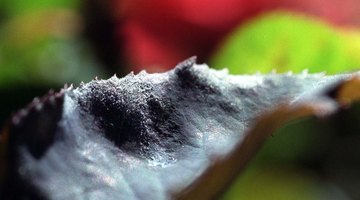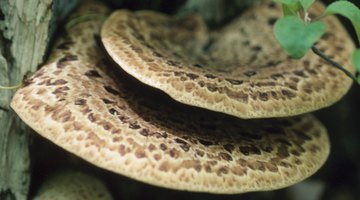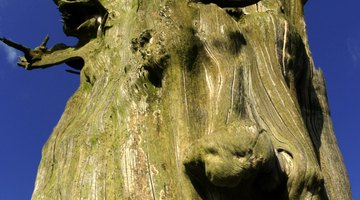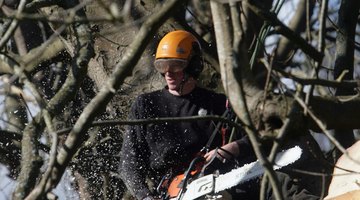The hornbeam is a hardwood tree that grows naturally in the United States and China. It is also found throughout much of Europe, including the southern-most parts of the UK. Warm climates and a maximum elevation of 600 metres (1968.5 feet) are essential for healthy growth of the hornbeam. It typically grows to a maximum height of 20 metres (65.6 feet) and is noted for its glossy, green leaves. The wood of the European hornbeam is used as timber in the construction industry. Hornbeam wood burns at a slow pace and retains its heat, which makes for excellent firewood. The European hornbeam is, however, prone to certain diseases.
Mildew

One of the most common of all diseases that has an adverse affect on the European hornbeam is mildew. A type of fungi, mildew wreaks havoc on a European hornbeam tree. The specific fungi that causes disease in the hornbeam is powdery mildew. Diagnosing a European hornbeam with powdery mildew is not a difficult task. Both the stems and the leaves of the tree develop powdery, white blotches. As the disease takes a greater hold, entire sections of the tree become infected. Chemical treatments, in the form of fungicides, help prevent outbreaks of powdery mildew.
- One of the most common of all diseases that has an adverse affect on the European hornbeam is mildew.
- The specific fungi that causes disease in the hornbeam is powdery mildew.
Rot and decay

Decay fungus and heart rot are two fungi-based conditions that prove fatal to the European hornbeam. Both attack the central portion of the trunk and the branches. The result is decay of the wood with alarming speed. It is difficult to diagnose decay fungus and heart rot in a European hornbeam. The reason being that there are no external indications of disease. It is only when a hornbeam is chopped down for timber that the problem is noticed. Indeed, the damage that decay fungus and heart rot cause renders affected hornbeams useless as timber or firewood.
- Decay fungus and heart rot are two fungi-based conditions that prove fatal to the European hornbeam.
- Indeed, the damage that decay fungus and heart rot cause renders affected hornbeams useless as timber or firewood.
The roots

A very serious condition associated with the European hornbeam is oak root rot. As its name suggests oak root rot targets the roots of the tree. The roots of the hornbeam are vital to its growth and survival. They are designed to absorb, store and circulate nutrients, water and food. As the underground roots of the European hornbeam begin to rot, the tree does not receive sufficient nourishment. Leaves take on a pale and unhealthy appearance. Branches decay and die. The ultimate outcome is the death of the tree. As an over-abundance of water triggers root rot, good drainage prevent problems from developing.
- A very serious condition associated with the European hornbeam is oak root rot.
- As its name suggests oak root rot targets the roots of the tree.
Cankers cause problems

The European hornbeam falls victim to what are termed cankers. They are regions of decaying or dead bark. They chiefly appear on the trunk and branches of the hornbeam. Cankers are identifiable by marked differences in colour to healthy bark. Depressions in the bark, sometimes containing fungi, are signs of cankers, too. If cankers do not spread widely and aggressively, damage to a European hornbeam is minimal. Death occurs, however, if the cankers penetrate the vascular system of the European hornbeam. This will require the tree to be cut down to prevent fungi spreading to other, nearby hornbeams. Bactericides resolve the problem, providing canker damage is not overly advanced.
- The European hornbeam falls victim to what are termed cankers.
- Depressions in the bark, sometimes containing fungi, are signs of cankers, too.
